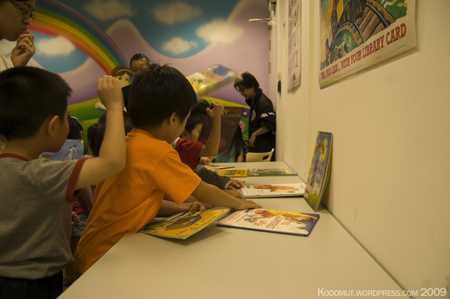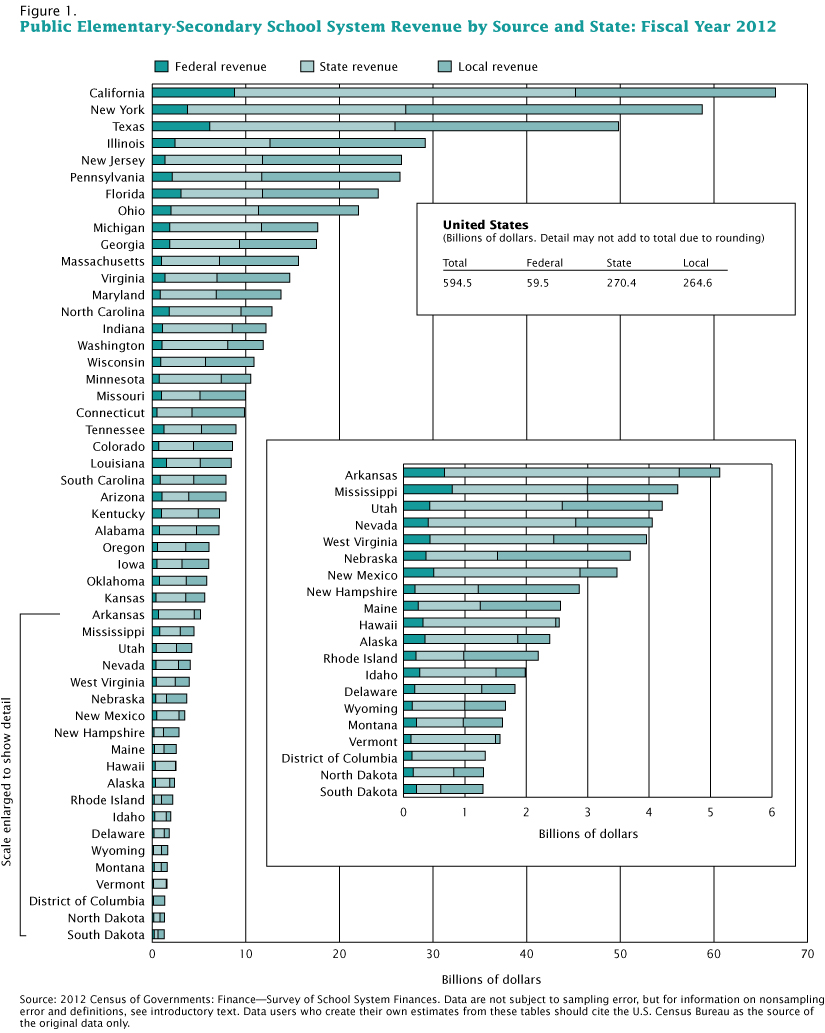Education around the World
Overview
- Identify differences in educational resources around the world
- Describe the concept of universal access to education

Education is a social institution through which a society’s children are taught basic academic knowledge, learning skills, and cultural norms. Every nation in the world is equipped with some form of education system, though those systems vary greatly. The major factors that affect education systems are the resources and money that are utilized to support those systems in different nations. As you might expect, a country’s wealth has much to do with the amount of money spent on education. Countries that do not have such basic amenities as running water are unable to support robust education systems or, in many cases, any formal schooling at all. The result of this worldwide educational inequality is a social concern for many countries, including the United States.
International differences in education systems are not solely a financial issue. The value placed on education, the amount of time devoted to it, and the distribution of education within a country also play a role in those differences. For example, students in South Korea spend 220 days a year in school, compared to the 180 days a year of their United States counterparts (Pellissier 2010). As of 2006, the United States ranked fifth among twenty-seven countries for college participation, but ranked sixteenth in the number of students who receive college degrees (National Center for Public Policy and Higher Education 2006). These statistics may be related to how much time is spent on education in the United States.
Then there is the issue of educational distribution within a nation. In December 2010, the results of a test called the Program for International Student Assessment (PISA), which is administered to fifteen-year-old students worldwide, were released. Those results showed that students in the United States had fallen from fifteenth to twenty-fifth in the rankings for science and math (National Public Radio 2010). Students at the top of the rankings hailed from Shanghai, Finland, Hong Kong, and Singapore.
Analysts determined that the nations and city-states at the top of the rankings had several things in common. For one, they had well-established standards for education with clear goals for all students. They also recruited teachers from the top 5 to 10 percent of university graduates each year, which is not the case for most countries (National Public Radio 2010).
Finally, there is the issue of social factors. One analyst from the Organization for Economic Cooperation and Development, the organization that created the test, attributed 20 percent of performance differences and the United States’ low rankings to differences in social background. Researchers noted that educational resources, including money and quality teachers, are not distributed equitably in the United States. In the top-ranking countries, limited access to resources did not necessarily predict low performance. Analysts also noted what they described as “resilient students,” or those students who achieve at a higher level than one might expect given their social background. In Shanghai and Singapore, the proportion of resilient students is about 70 percent. In the United States, it is below 30 percent. These insights suggest that the United States’ educational system may be on a descending path that could detrimentally affect the country’s economy and its social landscape (National Public Radio 2010).
Education in Finland
With public education in the United States under such intense criticism, why is it that Singapore, South Korea, and especially Finland (which is culturally most similar to us), have such excellent public education? Over the course of thirty years, the country has pulled itself from among the lowest rankings by the Organization of Economic Cooperation (OEDC) to first in 2012, and remains, as of 2014, in the top five. Contrary to the rigid curriculum and long hours demanded of students in South Korea and Singapore, Finnish education often seems paradoxical to outside observers because it appears to break a lot of the rules we take for granted. It is common for children to enter school at seven years old, and children will have more recess and less hours in school than U.S. children—approximately 300 less hours. Their homework load is light when compared to all other industrialized nations (nearly 300 fewer hours per year in elementary school). There are no gifted programs, almost no private schools, and no high-stakes national standardized tests (Laukkanen 2008; LynNell Hancock 2011).
Prioritization is different than in the United States. There is an emphasis on allocating resources for those who need them most, high standards, support for special needs students, qualified teachers taken from the top 10 percent of the nation's graduates and who must earn a Master's degree, evaluation of education, balancing decentralization and centralization.
"We used to have a system which was really unequal," stated the Finnish Education Chief in an interview. "My parents never had a real possibility to study and have a higher education. We decided in the 1960s that we would provide a free quality education to all. Even universities are free of charge. Equal means that we support everyone and we’re not going to waste anyone’s skills." As for teachers, "We don’t test our teachers or ask them to prove their knowledge. But it’s true that we do invest in a lot of additional teacher training even after they become teachers" (Gross-Loh 2014).
Yet over the past decade Finland has consistently performed among the top nations on the PISA. Finland’s school children didn’t always excel. Finland built its excellent, efficient, and equitable educational system in a few decades from scratch, and the concept guiding almost every educational reform has been equity. The Finnish paradox is that by focusing on the bigger picture for all, Finland has succeeded at fostering the individual potential of most every child.
"We created a school system based on equality to make sure we can develop everyone’s potential. Now we can see how well it’s been working. Last year the OECD tested adults from twenty-four countries measuring the skill levels of adults aged sixteen to sixty-five on a survey called the PIAAC (Programme for International Assessment of Adult Competencies), which tests skills in literacy, numeracy, and problem solving in technology-rich environments. Finland scored at or near the top on all measures."
Formal and Informal Education
As already mentioned, education is not solely concerned with the basic academic concepts that a student learns in the classroom. Societies also educate their children, outside of the school system, in matters of everyday practical living. These two types of learning are referred to as formal education and informal education.
Formal education describes the learning of academic facts and concepts through a formal curriculum. Arising from the tutelage of ancient Greek thinkers, centuries of scholars have examined topics through formalized methods of learning. Education in earlier times was only available to the higher classes; they had the means for access to scholarly materials, plus the luxury of leisure time that could be used for learning. The Industrial Revolution and its accompanying social changes made education more accessible to the general population. Many families in the emerging middle class found new opportunities for schooling.
The modern U.S. educational system is the result of this progression. Today, basic education is considered a right and responsibility for all citizens. Expectations of this system focus on formal education, with curricula and testing designed to ensure that students learn the facts and concepts that society believes are basic knowledge.
In contrast, informal education describes learning about cultural values, norms, and expected behaviors by participating in a society. This type of learning occurs both through the formal education system and at home. Our earliest learning experiences generally happen via parents, relatives, and others in our community. Through informal education, we learn how to dress for different occasions, how to perform regular life routines like shopping for and preparing food, and how to keep our bodies clean.

Cultural transmission refers to the way people come to learn the values, beliefs, and social norms of their culture. Both informal and formal education include cultural transmission. For example, a student will learn about cultural aspects of modern history in a U.S. History classroom. In that same classroom, the student might learn the cultural norm for asking a classmate out on a date through passing notes and whispered conversations.
Access to Education
Another global concern in education is universal access. This term refers to people’s equal ability to participate in an education system. On a world level, access might be more difficult for certain groups based on class or gender (as was the case in the United States earlier in the nation’s history, a dynamic we still struggle to overcome). The modern idea of universal access arose in the United States as a concern for people with disabilities. In the United States, one way in which universal education is supported is through federal and state governments covering the cost of free public education. Of course, the way this plays out in terms of school budgets and taxes makes this an often-contested topic on the national, state, and community levels.

A precedent for universal access to education in the United States was set with the 1972 U.S. District Court for the District of Columbia’s decision in Mills v. Board of Education of the District of Columbia. This case was brought on the behalf of seven school-age children with special needs who argued that the school board was denying their access to free public education. The school board maintained that the children’s “exceptional” needs, which included mental retardation and mental illness, precluded their right to be educated for free in a public school setting. The board argued that the cost of educating these children would be too expensive and that the children would therefore have to remain at home without access to education.
This case was resolved in a hearing without any trial. The judge, Joseph Cornelius Waddy, upheld the students’ right to education, finding that they were to be given either public education services or private education paid for by the Washington, D.C., board of education. He noted that
Constitutional rights must be afforded citizens despite the greater expense involved … the District of Columbia’s interest in educating the excluded children clearly must outweigh its interest in preserving its financial resources. … The inadequacies of the District of Columbia Public School System whether occasioned by insufficient funding or administrative inefficiency, certainly cannot be permitted to bear more heavily on the “exceptional” or handicapped child than on the normal child (Mills v. Board of Education 1972).
Today, the optimal way to include differently abled students in standard classrooms is still being researched and debated. “Inclusion” is a method that involves complete immersion in a standard classroom, whereas “mainstreaming” balances time in a special-needs classroom with standard classroom participation. There continues to be social debate surrounding how to implement the ideal of universal access to education.
Summary
Educational systems around the world have many differences, though the same factors—including resources and money—affect every educational system. Educational distribution is a major issue in many nations, including in the United States, where the amount of money spent per student varies greatly by state. Education happens through both formal and informal systems; both foster cultural transmission. Universal access to education is a worldwide concern.
Section Quiz
What are the major factors that affect education systems throughout the world?
- Resources and money
- Student interest
- Teacher interest
- Transportation
Hint:
A
What do nations that are top-ranked in science and math have in common?
- They are all in Asia.
- They recruit top teachers.
- They spend more money per student.
- They use cutting-edge technology in classrooms.
Hint:
B
Informal education _________________.
- describes when students teach their peers
- refers to the learning of cultural norms
- only takes place at home
- relies on a planned instructional process
Hint:
B
Learning from classmates that most students buy lunch on Fridays is an example of ________.
- cultural transmission
- educational access
- formal education
- informal education
Hint:
A
The 1972 case Mills v. Board of Education of the District of Columbia set a precedent for __________.
- access to education
- average spending on students
- desegregation of schools
- teacher salary
Hint:
A
Short Answer
Has there ever been a time when your formal and informal educations in the same setting were at odds? How did you overcome that disconnect?
Do you believe free access to schools has achieved its intended goal? Explain.
Further Research
Though it’s a struggle, education is continually being improved in the developing world. To learn how educational programs are being fostered worldwide, explore the Education section of the Center for Global Development’s website: http://openstaxcollege.org/l/center_global_development
References
Darling-Hammond, Linda. 2010. "What We Can Learn from Finland's Successful School Reform." NEA Today Magazine. Retrieved December 12, 2014. (http://www.nea.org/home/40991.htm)..
Durkheim, Emile. 1898 [1956]. Education and Sociology. New York: Free Press.
Gross-Loh, Christine. 2014. "Finnish Education Chief: 'We Created a School System Based on Equality.'" The Atlantic. Retrieved December 12, 2014. (http://www.theatlantic.com/education/archive/2014/03/finnish-education-chief-we-created-a-school-system-based-on-equality/284427/?single_page=true).
Mills v. Board of Education, 348 DC 866 (1972).
National Center for Public Policy and Higher Education. 2006. Measuring UP: The National Report Card on Higher Education. Retrieved December 9, 2011 (http://www.eric.ed.gov/PDFS/ED493360.pdf).
National Public Radio. 2010. “Study Confirms U.S. Falling Behind in Education.” All Things Considered, December 10. Retrieved December 9, 2011 (https://www.npr.org/2010/12/07/131884477/Study-Confirms-U-S-Falling-Behind-In-Education).
Pellissier, Hank. 2010. “High Test Scores, Higher Expectations, and Presidential Hype.” Great Schools. Retrieved January 17, 2012 (http://www.greatschools.org/students/academic-skills/2427-South-Korean-schools.gs).
Rampell, Catherine. 2009. “Of All States, New York’s Schools Spend Most Money Per Pupil.” Economix. Retrieved December 15, 2011 (http://economix.blogs.nytimes.com/2009/07/27/of-all-states-new-york-schools-spend-most-money-per-pupil/).
U.S. Census Bureau. 2014. "Public Education Finances 2012." Retrieved December 12, 2014. (http://www2.census.gov/govs/school/12f33pub.pdf).
World Bank. 2011. “Education in Afghanistan.” Retrieved December 14, 2011 (http://go.worldbank.org/80UMV47QB0).